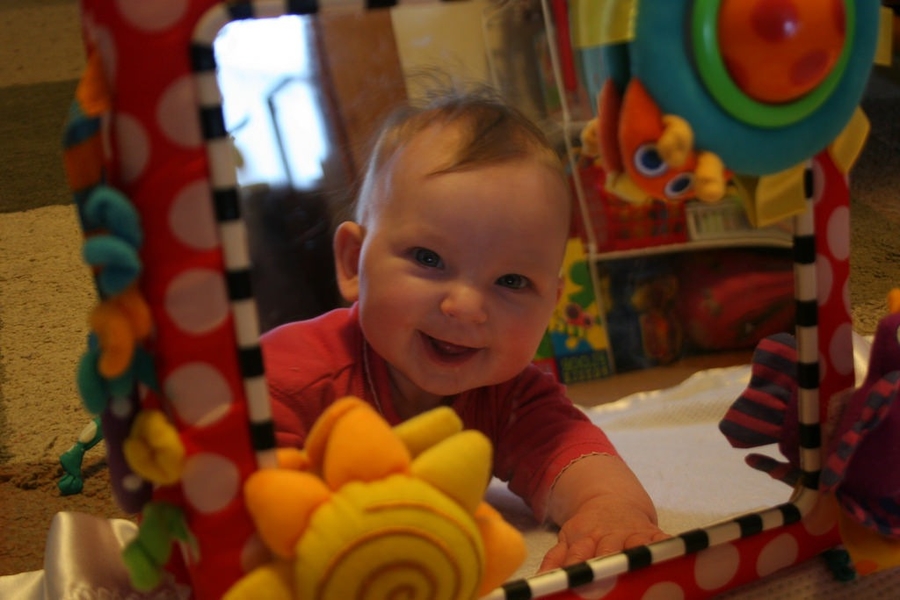
10 Easy Ways To Promote Your Child’s Cognitive Development
3 Apr 2018 | 5 min Read
Neha Khanna (PearlBuds)
Author | 20 Articles
Ten little fingers, ten little toes.. your little bundle of joy is here. You have planned each and every detail of the nursery, the outfits, the maternity and delivery photoshoot and of course had your second birth – AS A MOTHER !!
With sleepless nights and numerous diaper changes, you will still enjoy each moment of love, care, warmth and amazement that you have a little miracle in your arms.
Your little one will grow by leaps and bounds, this is time of great growth. That tiny, helpless newborn is growing up, and each day brings another amazing milestone. Babies develop skills quickly during the first year, and it can be hard to know if your baby is on track. All babies master these skills at their own pace. Within this range of normal, you can watch for some common milestones.
Today, we discuss Cognitive development. Cognitive development is characterized by the way a child learns, acquires knowledge and interacts with his surrounding environment. Different cognitive skills are acquired as a baby through the childhood phase which need to meet certain developmental milestones. As a parent, you can encourage your baby’s and child’s cognitive development in the areas of memory, concentration, attention and perception.
Right from birth, children are aware of their surroundings and want to explore them. As your child plays and interacts with the people and objects around him, he learns about his body, his home and the world around him.
Here are Cognitive Milestones for the first BIG year –
- Learns about things by feel, sound, sight and smell. This starts with the breast crawl and gradually the baby understands and reacts to not only the parents but also the environment.
- Begins repeating movements to help brain growth and memory – You will notice that in this one year, the child repeatedly performs specific gestures or movements for poop, milk, pleasure, discomfort and various other stimuli.
- Explores things in different ways, like shaking, banging, throwing rattles, toys, milk bottles etc. They will try reaching out for smaller objects with finger and thumb and larger objects with both hands.
- Finds hidden things easily – when you slip a rattle underneath the blanket, he knows by moving away the blanket he gets the rattle by himself.
- Understand how objects can be used. For example, banging blocks on the floor, shake a rattle, or push buttons on a toy.
- The child in this one year will mimic a variety of actions like waving bye-bye, shaking his/her head indicating a significant jump in brain development.
- The child will follow one-step commands such as, “Please give me the ball.”, “Come Here.”
Turning the pages of a book, knocking over a stack of blocks, simple ring sorters, obsctacle avoidance and self-feeding are some of the many milestones the child would learn and master. - The child will start to associate the correct action with the obejcts like drinking from a cup, brushing hair, lifting one leg at a time to wear pants, lifting the arm to wear the t-shirt.
The child will learn to use and poke his index finger for many of the day-to-day activities. Putting hings in a container and taking them out will be his favourite game.
How to Boost Cognitive Development –
- Read Read Read – Read to your child! He is soaking up so much information at this age.
- Converse with your child – Do not baby talk but have meaningful conversations with your child. Describe what you are cooking, eating, feeding him, changing diapers etc.
Touch and talk about the body parts while changing diapers or giving a bath. - Talk about sounds of letters and numbers to your child. Count and read everything, anything.
- Play games with instructions. Your child is increasingly able to follow simple directions and will be so proud of himself when he can do what you ask.
- Have nesting toys such as cups or boxes that fit into each other. Show your baby how to stack them and nest them. My little one just loves breaking the tower when I stack them.
- Introduce the concept of object permanence to your child at this stage – Let your baby watch you put a large toy beneath a blanket. When you ask her to find it, she will notice that the blanket isn’t flat and remember that you put the toy under the blanket. She will pull the blanket off to find the toy.
- At this stage the child has started exploring his environment by crawling and standing with support. Start with simple exercises along with music to enhance movement and strengthen balance.
- Provide your little one with kitchen utensils and spatulas. Let him bang, pretend cook and simply play. You will be amazed with their creativity.
- Make sure to introduce and let your child play maximum 2-3 toys at a time. This helps develop concentration, focus and respect towards play.
As we conclude, the first of many articles on the series for cognitive development, the only thing I will always advise is that “Development and learning can take place anywhere and everywhere. Important thing is you need to keep a lookout and not miss the opportunity”.
Also read: Pre-literacy: Non Verbal Cognitive Skills
A


Related Topics for you
Suggestions offered by doctors on BabyChakra are of advisory nature i.e., for educational and informational purposes only. Content posted on, created for, or compiled by BabyChakra is not intended or designed to replace your doctor's independent judgment about any symptom, condition, or the appropriateness or risks of a procedure or treatment for a given person.
